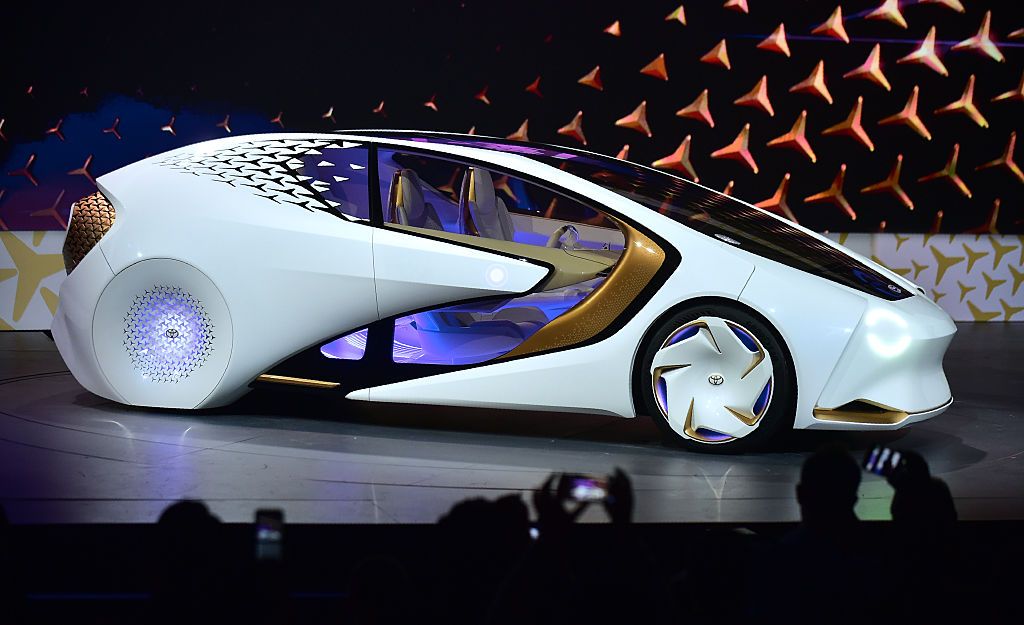This post analyses some styling features of the redesigned 2018 Honda Accord, one of the top-selling standard size cars in the North American market.
No preliminary essay here. Instead, we go straight to images and captions.
The 2018 Honda Accord has an interesting mix of body sculpting and current styling clichés. The latter include the now-common slightly downwards curving band running along the prow of the hood incorporating headlight assemblies. Another fashionable touch is the faux air intake below the headlight. Unlike other brands, the Accord has a light there, conceding that the false-opening is not really a functional item. The overall facial appearance strikes me as that of an angry monster, mouth open, ready to devour pedestrian prey. As for the sculpting, note the bulge extending abaft of the headlight assembly that incorporates part of the front wheel opening and then curves downwards slightly as it blends into the rest of the side. It evokes the spirit of fade-away front fenders of 1940s Packard Clippers, though the shapes are not the same.
This frontal view helps explain the sculpting just mentioned. Aside from subtle character creases atop the hood, we find stronger creases where the top of the hood translates to a bevel dropping to just below the cut line. The previous photo shows that this bevel terminates about at the A-pillar. The hood side cut line runs close to the lower edge of the bevel that becomes a character crease extending to the tail light assembly. The front of the wheel opening related bulge is at the extreme edges of the car's front. The overall frontal ensemble is very busy, but current fashions dictate that.
Rear sculpting is also very busy, but in line with current styling trends. The sides of the car are cleaner than today's average, though the dished in door panels and related bulges are more clichés. The detailing around the quarter window abaft of the C-pillar seems a little fussy, but actually helps tie together the top/fender/trunk merge sculpting, as can be seen better in the image below.
To me, the most interesting design feature of the new Accord is that it is essentially a fastback. Not in the 1940s sense where the roofline smoothly curved down to the rear bumper. But a smooth, downwards roofline curve that, almost Kamm-like, ends at a tiny hood-lid-cum-spoiler surface before the chop-off. Many other current sedans have similar profiles, but the Honda is subtly more fastback-looking.
For comparison, here is the previous Accord, from 2013. The roofline is more typical of current wind tunnel influenced shaping where the trunk area is more distinct.
The Mercedes CLS might have been something of a benchmark for near-fastback styling. This side view is of the 2005 original version whose profile is seemingly nearly matched by the '18 Accord, yet has a trunk lid area more in line with the '13 Accords and other recent cars.
Here is the new 2019 CLS. Its profile is little changed from 2005.
This post analyses some styling features of the redesigned 2018 Honda Accord, one of the top-selling standard size cars in the North American market.
No preliminary essay here. Instead, we go straight to images and captions.
The 2018 Honda Accord has an interesting mix of body sculpting and current styling clichés. The latter include the now-common slightly downwards curving band running along the prow of the hood incorporating headlight assemblies. Another fashionable touch is the faux air intake below the headlight. Unlike other brands, the Accord has a light there, conceding that the false-opening is not really a functional item. The overall facial appearance strikes me as that of an angry monster, mouth open, ready to devour pedestrian prey. As for the sculpting, note the bulge extending abaft of the headlight assembly that incorporates part of the front wheel opening and then curves downwards slightly as it blends into the rest of the side. It evokes the spirit of fade-away front fenders of 1940s Packard Clippers, though the shapes are not the same.
This frontal view helps explain the sculpting just mentioned. Aside from subtle character creases atop the hood, we find stronger creases where the top of the hood translates to a bevel dropping to just below the cut line. The previous photo shows that this bevel terminates about at the A-pillar. The hood side cut line runs close to the lower edge of the bevel that becomes a character crease extending to the tail light assembly. The front of the wheel opening related bulge is at the extreme edges of the car's front. The overall frontal ensemble is very busy, but current fashions dictate that.
Rear sculpting is also very busy, but in line with current styling trends. The sides of the car are cleaner than today's average, though the dished in door panels and related bulges are more clichés. The detailing around the quarter window abaft of the C-pillar seems a little fussy, but actually helps tie together the top/fender/trunk merge sculpting, as can be seen better in the image below.
To me, the most interesting design feature of the new Accord is that it is essentially a fastback. Not in the 1940s sense where the roofline smoothly curved down to the rear bumper. But a smooth, downwards roofline curve that, almost Kamm-like, ends at a tiny hood-lid-cum-spoiler surface before the chop-off. Many other current sedans have similar profiles, but the Honda is subtly more fastback-looking.
For comparison, here is the previous Accord, from 2013. The roofline is more typical of current wind tunnel influenced shaping where the trunk area is more distinct.
The Mercedes CLS might have been something of a benchmark for near-fastback styling. This side view is of the 2005 original version whose profile is seemingly nearly matched by the '18 Accord, yet has a trunk lid area more in line with the '13 Accords and other recent cars.
Here is the new 2019 CLS. Its profile is little changed from 2005.



















EmoticonEmoticon